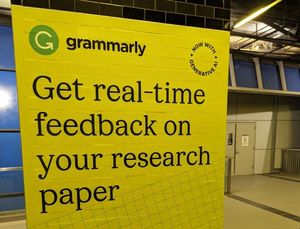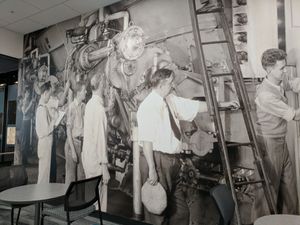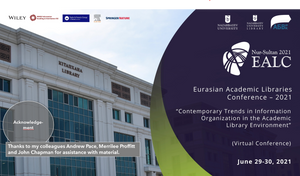As more activity enters a network space, the need for well-understood approaches to data and service interchange increases. This has led to a high, and growing, acronymic density in discussion. It also leads to some confusion for practitioners, as many standards (or specifications) discussions are ‘techeological’ in nature: technology is viewed through a particular ideology. For those who want to build systems it is not always clear which particular acronym to chose as the landscape changes. Keeping up can seem, to use a phrase I heard from a colleague recently, like painting a moving train.
Consider a metadata discussion in libraries for example. One might overhear any or all of the following: MARC XML, EAD, VRA Core, GEM, Dublin Core, MODS, IEEE LOM. And this is before any discussion of application profiles, RDF, XML, data entry guidelines, controlled vocabularies or character sets. In the age of Amazoogle, one wonders about the need for such elaboration.
A further issue is that we have not evolved good ways of managing these standards over their full life-cycle. This may be inevitable, but it does lead to less than optimal situations. This is especially so as standards may require maintenance support of various kinds: registries, updating, guidelines, and so on. It is important to realize that different approaches are needed at different stages in the lifecycle: from creation, to evangelism, to stability, to routine maintenance, to evolution, and so on. The same skills are not required at each stage. There is not consensus on the benefits of formal standardization. Several of the core technologies underlying digital library development have not been through a formal standardization process (which may or may not be a bad thing). Several of these core technologies have limited support mechanisms.
These issues are of particular moment in the digital library community which does not have large industrial players who coalesce around particular approaches. It is also a community which is increasingly aware that there is benefit in inheriting approaches from wider industrial environments, and where a range of issues are outstanding. In the former case, think of authentication and authorization; in the latter, we still need agreed ways of describing collections (collection description) and services (service description).
OCLC, RLG, CNI and ALA are organizing an invitational workshop to look at this situation. It will bring together some standards developer and some organizations which are currently providing support for standards development and maintenance. The aim is to consider these issues, moving to a shared understanding, if possible, and to identify any preferred directions. The meeting will be held in the new year and a report will appear in due course.
Jim Michalko, RLG, recently discussed these questions:
What is different? Most of the recent successful standards activities have bypassed the rigorous standards processes of prior years. They arise from evangelists, occasionally in conjunction with a project, who have no intention of going through the processes that were formerly standard operating procedure. They have nowhere to go if they are successful. They have no ways to be properly embedded in the community. They have no mechanisms to support them over the long-term. This says as much about the state of our standards bodies as it does about the new generative processes. We have not managed to create new models for sustainable support and management. As a consequence, what we’re creating and implementing is very fragile.
Some of this may be due to an unacknowledged shift in the expectations of the library community. Over the past decade the community has gone from being consumers to being creators. We build what we need, imagining that we’ll be behaving like consumers, when the current circumstance mandates that we be continuing supporters of what’s built. It’s an urge to build without the discipline of creating a sustainable product.
What’s wrong with this? In the absence of a product rollout and life-cycle perspective, the obligation to grow and maintain these standards falls to the organizations that see them as a mission-driven responsibility. Layering on the attributes of a product after the fact makes for a costly and more difficult long-term scenario. The community is exposed to the vagaries of the organizations that rescue these “social goods” on their behalf. Often that rescue is grudging and does not come with the necessary investment to grow and enhance. [RLG TopShelf: Transition!–July 2004]



